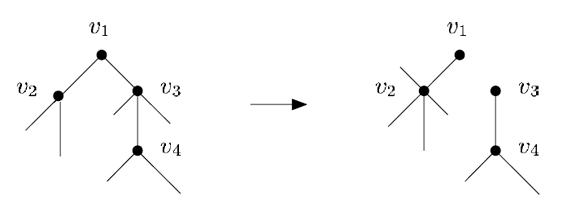
Peng Yin & Alexander Hartemink
In Bioinformatics, 21, April 2005. pp. 869–879.
Downloads: PDF
Abstract
Motivation: Duplication of an organism's entire genome is a rare
but spectacular event, enabling the rapid emergence of multiple
new gene functions. Over time, the parallel linkage of duplicated
genes across chromosomes may be disrupted by reciprocal translocations,
while the intrachromosomal order of genes may be shuffled by inversions
and transpositions. Some duplicate genes may evolve unrecognizably
or be deleted. As a consequence, the only detectable signature
of an ancient duplication event in a modern genome may be the presence
of various chromosomal segments containing parallel paralogous
genes, with each segment appearing exactly twice in the genome.
The problem of reconstructing the linkage structure of an ancestral
genome before duplication is known as genome halving with unordered
chromosomes.
Results: In this paper, we derive a new upper bound on the genome halving distance that is tighter than the best known, and a newlower bound that is almost always tighter than the best known. We also define the notion of genome halving diameter, and obtain both upper and lower bounds for it. Our tighter bounds on genome halving distance yield a new algorithm for reconstructing an ancestral duplicated genome. We create a software package HalvingSoft based on this new algorithm and test it on the yeast genome, identifying a sequence of translocations for halving the yeast genome that is shorter than previously conjectured possible.
Availability: HalvingSoft is available upon email
request py@cs.duke.edu

Back to pulications